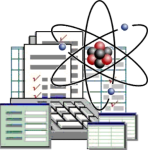2014-11-18 arXiv:physics/arXiv:1411.2960,
DOI: 10.48550/arXiv.1411.2960 11 P. November 2014 We study the features of cooperative parametric (quasi-Cherenkov) radiation arising when initially unmodulated electron (positron) bunches pass through a crystal (natural or artificial) under the conditions of dynamical diffraction of electromagnetic waves in the presence of shot noise. A detailed numerical analysis is given for cooperative THz radiation in artificial crystals. The radiation intensity above 200~MW/cm^2 is obtained in simulations.
In two- and three-wave diffraction cases, the peak intensity of cooperative radiation emitted at small and large angles to particle velocity is investigated as a function of the particle number in an electron bunch. The peak radiation intensity appeared to increase monotonically until saturation is achieved. At saturation, the shot noise causes strong fluctuations in the intensity of cooperative parametric radiation. It is shown that the duration of radiation pulses can be much longer than the particle flight time through the crystal. This enables a thorough experimental investigation of the time structure of cooperative parametric radiation generated by electron bunches available with modern accelerators. The complicated time structure of cooperative parametric (quasi-Cherenkov) radiation can be observed in artificial (electromagnetic, photonic) crystals in all spectral ranges (X-ray, optical, terahertz, and microwave). |



